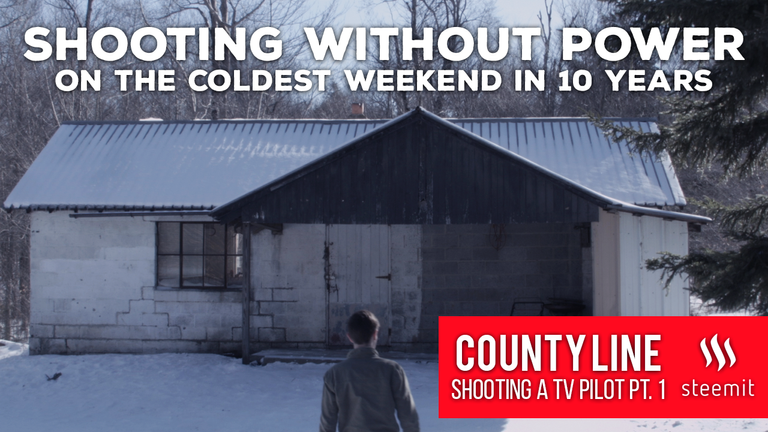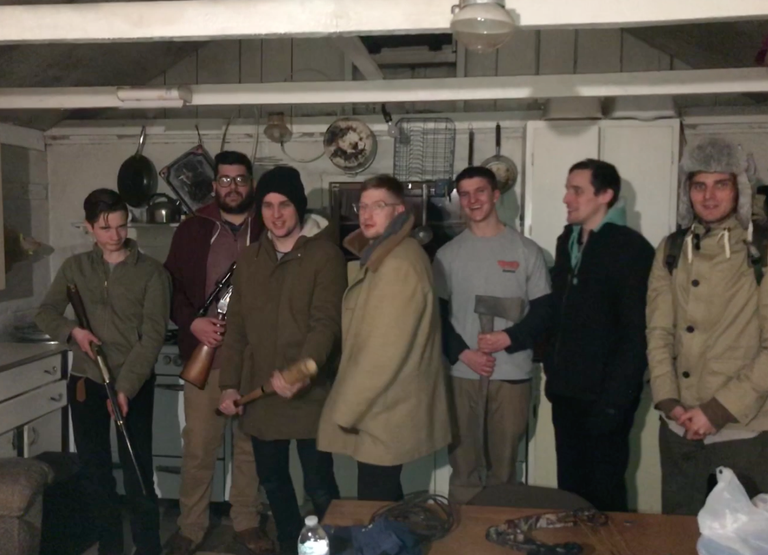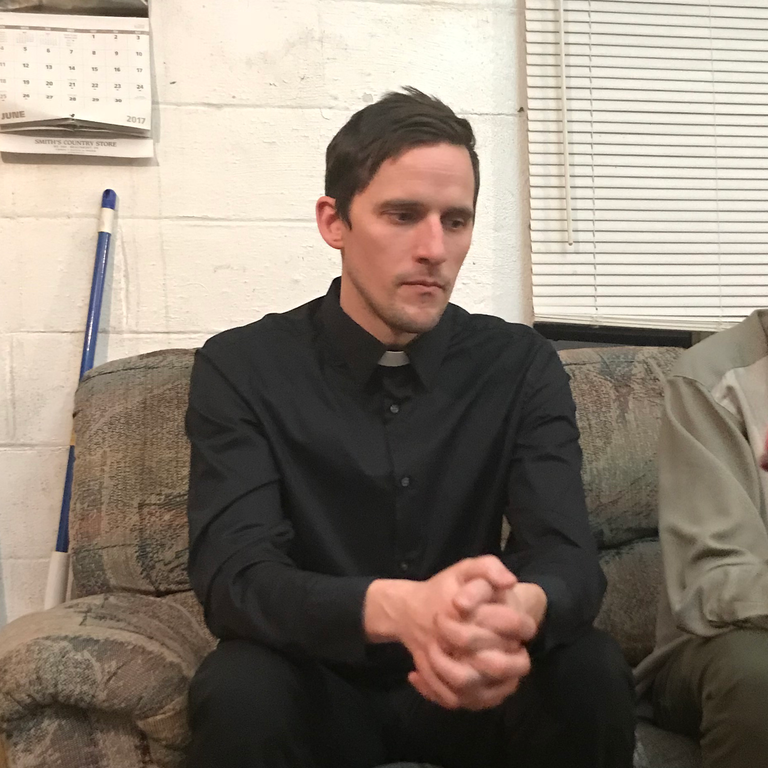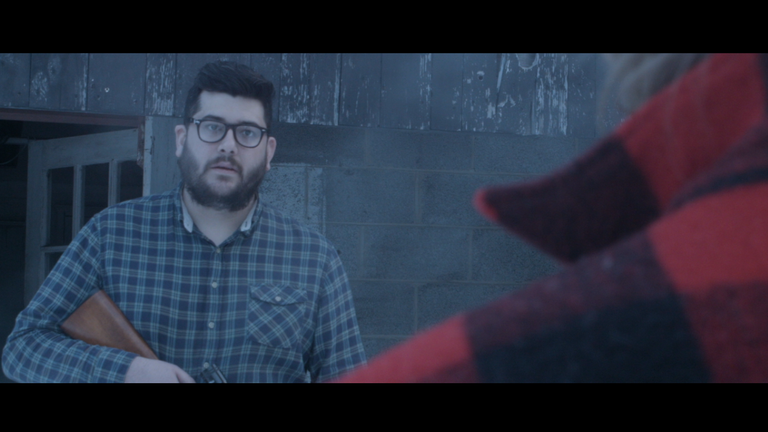
There are so many moving parts when it comes to planning a low-budget shoot. You've got to painstakingly work around peoples schedules (especially if they are volunteers) -- And after that, you still can't fully expect them to be there (again with the volunteers). We planned and scheduled days 2 and 3 of County Line in November. Nobody could have told us we'd be heading into no man's land, to a cabin with a broken generator, on the coldest weekend in twenty years.
County Line is by far the fastest I have ever moved from the writing phase to production. With conception, to shooting script to our first shoot being only a month and some change. Our first day of shooting was December 29th. We chose to begin shooting with by far the most technically difficult scene, which required most of the cast, plus one featured character. Rik Billock is a seasoned, 70-year-old SAG actor from Pittsburgh.
That shoot. On the 29th. Is not the reason that my feet are still numb after a hot shower and some fresh socks. So we'll talk about that shoot another time.
County Line is being shot on a budget of <1000 bucks. One of my goals with this project is to prove that with half decent prosumer equipment (Black Magic Cinema Camera and various acquired or donated Jibs, rigs and lights), a half decent script, a good amount of patience and a handful of good friends, that you can create something worthwhile. It was this goal that sent 7 young men miles into the wilderness to a friends cabin to film roughly 15 scenes over the span of 30 hours.

The team -- My Baby Brother on the far left. He's an incredible actor and is KILLING it in this.
When we arrived at the cabin, we were met with a generator that wouldn't turn on, a door that was so drafty it didn't matter if it was closed or open and a wind chill that was 15 degrees colder than it was in town. Despite all this, the team rallied together, complained very little and shot the living hell out of those 15 scenes. Thanks to the handiwork of my personal hero and business partner Charlie, we got the power generator up and running just before we threw in the towel and headed back down the mountain.

Charlie plays a failed priest in County Line
We shot most of the scenes by doing close-ups/medium shots of each character involved and then doubling back for wides once everyone was more comfortable. When working with amateur actors, AKA your pals, you sometimes have to take it line by line, and they aren't always accepting or understanding of your direction. But it truly is my favorite way to create. Usually, on the last one or two takes, we'll get frisky and improvise a little and roam on the camera. When looking back through the footage, some of those wild-cards are my favorite takes and shots.
Quick Filmmaking Tip for Fellow Amateurs
As in independent filmmaker, our goal is to make something look cinematic on a budget. I have a couple rules or tricks I follow (none of which are unique to me by any means) that help achieve that look when I shoot on a DSLR or even an iPhone camera.
One thing is simply watch movies. Pick a favorite cinematographer and study their shot composition, or how the shot looks. Usually, a cinematographer will have a unique visual style that follows them from project to project. My favorite cinematographer is Roger Deakins -- Who is yours?
One simply rule for beginners is to learn about the rule of thirds
The rule of thirds is a "rule of thumb" or guideline which proposes that an image should be imagined as divided into nine equal parts by two equally spaced horizontal lines and two equally spaced vertical lines, and that important compositional elements should be placed along these lines or their intersections. Proponents of the technique claim that aligning a subject with these points creates more tension, energy and interest in the composition than simply centering the subject.
Wikipedia

A shot from this weekend where I frame the character Johnny in the lefthand side of the frame, looking towards a character to the right.
So when framing a shot, if the character is looking or facing a certain way, give them space in that same direction. Alternately, a center framed shot follows this rule, but I personally reserve those shots for important or dramatic cues.
Have any thoughts on Rule of Thirds? Disagree? Let me know!
It's good to be home. It's good to be warm. I'm writing this with my three best mates (Walnut, Willow and Broken Ear) keeping me warm. Until next time Steemit.
Walnut (Back) Willow (Front) Broken Ear (Stray I took in with a Broken Ear)
To Be Continued.

Congrats on getting the film together! When you work in a production, you start to realize what a miracle that any film gets made, the process can be so grueling!
I dig this style of documenting the production progress on here. Neat to have an inside look.